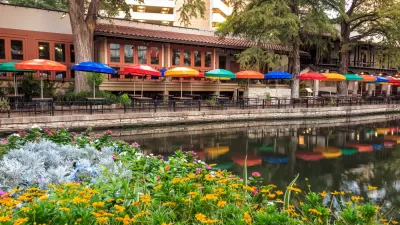A forthcoming study, to be published by the Journal of Regional Science, finds the urban preferences of younger generations growing over the past three decades.

Richard Florida reports: "A new peer-reviewed study (the article is forthcoming in the Journal of Regional Science) finds that not only have young people been a driving force in the urban resurgence of the past two decades, but they favor living in central urban neighborhoods significantly more than previous generations did at the same stages in life."
Yongsung Lee of the Georgia Institute of Technology and Bumsoo Lee and Md Tanvir Hossain Shubho of the University of Illinois at Urbana-Champaign authored the study.
Over the past three decades, each successive cohort of young adults in the United States has become progressively more urban. "Young adults aged 25-34 have indeed been key movers in the urban revival. But the shift precedes Millennials; it actually began with Gen Xers back in the 1990s. And the youngest cohort, aged 20-24, is the most urban of all. American adults aged 20 to 34 are much more urban, and much less suburban, than the Baby Boomers," according to Florida's explanation of the study's findings.
FULL STORY: Young People’s Love of Cities Isn’t a Passing Fad

Alabama: Trump Terminates Settlements for Black Communities Harmed By Raw Sewage
Trump deemed the landmark civil rights agreement “illegal DEI and environmental justice policy.”

Study: Maui’s Plan to Convert Vacation Rentals to Long-Term Housing Could Cause Nearly $1 Billion Economic Loss
The plan would reduce visitor accommodation by 25% resulting in 1,900 jobs lost.

Why Should We Subsidize Public Transportation?
Many public transit agencies face financial stress due to rising costs, declining fare revenue, and declining subsidies. Transit advocates must provide a strong business case for increasing public transit funding.

Wind Energy on the Rise Despite Federal Policy Reversal
The Trump administration is revoking federal support for renewable energy, but demand for new projects continues unabated.

Passengers Flock to Caltrain After Electrification
The new electric trains are running faster and more reliably, leading to strong ridership growth on the Bay Area rail system.

Texas Churches Rally Behind ‘Yes in God’s Back Yard’ Legislation
Religious leaders want the state to reduce zoning regulations to streamline leasing church-owned land to housing developers.
Urban Design for Planners 1: Software Tools
This six-course series explores essential urban design concepts using open source software and equips planners with the tools they need to participate fully in the urban design process.
Planning for Universal Design
Learn the tools for implementing Universal Design in planning regulations.
Caltrans
Smith Gee Studio
Institute for Housing and Urban Development Studies (IHS)
City of Grandview
Harvard GSD Executive Education
Toledo-Lucas County Plan Commissions
Salt Lake City
NYU Wagner Graduate School of Public Service




























